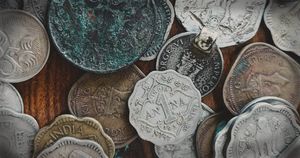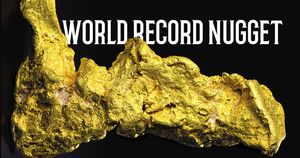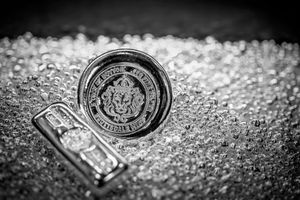The history of silver is inextricably linked with the history of human civilization, especially the history of money. With a brilliant shine, silver has captivated people for thousands of years, but unlike more industrial metals like copper and iron which could be used for tools and weapons, silver became among the most common forms of currency. In fact, in many languages, the word “silver” is synonymous with “money.”
Though most currencies can no longer be exchanged for their value in precious metals, silver remains a remarkably valuable material and a worthwhile investment to balance any portfolio. Learning about the history of silver can provide a fascinating insight into the behavior of silver markets today.
The History of Silver
The history of silver always begins in the heart of a dying star. Like other heavy elements, including gold and uranium, silver can only be created with a massive amount of energy. All the silver on Earth was formed in supernovae, which occur when the largest stars explode at the end of their lifespan. Over billions of years, silver and myriad other elements coalesced to form the planet, and more silver crashes into Earth via meteoroids.
Anthropologists believe that the discovery of silver was made by paleolithic peoples, around the same time humans were beginning to move from hunter-gatherer communities into more recognizable forms of civilization. As people actively dug copper mines between 9000 BCE and 5000 BCE, they encountered large amounts of silver because the two metals naturally occur in close proximity. Groups in Anatolia began intentionally digging silver mines by 3000 BCE to meet the growing demand for the gleaming metal in the first ancient city-states in Mesopotamia and Greece.
At the time, metallurgy was not advanced enough for ancient peoples to do much with the silver they acquired. Extracting the pure metal from the ore was all but impossible, and as a result, high-quality silver was much rarer and more expensive than gold in places like Ancient Egypt.
Ancient powers tended to develop a military strategy around known silver deposits. Ancient Athens had access to an outstanding source of silver thanks to its famous Laurium mines, which produced an estimated 30 tones of silver per year at its height and financed the city-state’s renowned army and navy. The largest silver mines in the Old World, the Iberian silver mines, supplied up to 200 tones of silver per year at its peak, and it changed hands again and again — falling to the Phoenicians, then the Carthaginians and finally the Romans until the Roman Empire collapsed.
Silver was often used as a valuable item for the exchange of goods or services, but it wasn’t used as a currency until 600 BCE, when the Lydians stamped electrum, or a gold and silver alloy, of a specific weight with certain images to ease trade. The practice quickly spread to neighboring city-states around the Mediterranean Sea.
The Middle Age of Silver
Silver deposits around the Mediterranean became exhausted in the Middle Ages, compelling Europeans to begin searching for more sources of this precious metal. Though France and the Holy Roman Empire saw the opening of a handful of new silver mines, these were limited in size and only operated for a few years before closing as well. The hunt for silver and other valuable commodities led the Spanish to explore the New World, where the discovery of silver deposits throughout Latin America led to widespread plundering and devastation of native populations. As a result, the Spanish Empire was able to sustain a large, well-trained military in the 16th and 17th centuries.
After the United States gained independence and began expanding westward, the global center of silver production shifted to North America. In the 19th century, major deposits of silver were found across the continent; in 1859, miners found the Comstock Lode in Nevada, the first discovery of silver ore in the United States and the richest silver vein in the country. This jump started a massive silver rush, resulting in a global oversupply of silver — causing the value of world currencies to plummet.
At the time, many currencies were backed by silver. In the U.S., for example, an American with a $10 bill could request from the government the equal value of that currency in silver. Unfortunately, it also means that the value of the currency is tied to the value of silver, so when the price of silver drops, inflation rises. This isn’t true today; because governments have dropped gold or silver standards, the value of precious metals is typically inversely proportional to the value of a currency, so savvy investors use precious metals as hedges against inflation.
Throughout the end of the 19th century, the U.S. and other countries struggled to maintain a thriving silver trade while keeping the value of their currency stable. Then, there was a significant change to the history of silver: the Industrial Revolution.
Silver Today
The Industrial Revolution made it easier than ever to mine, refine, and fabricate silver. What’s more, expansion of industrial practices found new uses of silver: in glass coatings for mirrors and photography, in components for electrical devices, in water purification and wood preservatives. Today, between 10% and 15% of the world’s silver goes to industrial demand; the rest goes to jewelry and investment.
In the middle of the 20th century, governments moved away from silver as a means of guaranteeing currency or collecting wealth. Still, silver remains as beautiful today as it always was — and it is certainly still immensely valuable. In fact, during the 2008 Global Financial Crisis, silver prices spiked to an all-time high, demonstrating to investors the importance of safeguarding their wealth by balancing their portfolio with silver products.
Shop Scottsdale Mint’s Silver Collection
Scottsdale Mint offers a wide array of silver products for collectors and investors, from massive 1 kilo stacker bars to diminutive 2 ounces of silver rounds. Many of Scottsdale Mint’s silver is available at lower premiums on the secondary market, an affordable opportunity for beginner stackers. If the history of silver has demonstrated anything, it is that investors are always wise to have some silver on hand.





